10 Best Image Labeling & Annotation Tools
Discover the top image labeling tools to streamline your data annotation process. From auto-labeling to quality control features, these tools optimize AI model training and enhance accuracy in image classification and segmentation.

Are you frustrated by the endless task of manually labeling thousands of images?
The hours seem to stretch on forever as you scrutinize each image, trying to get every tag just right, knowing that one wrong move could mess up your entire analysis.
It’s a real headache.
But what if you didn’t have to go through all that?
Imagine a tool that could take this burden off your shoulders, automating the labeling process and ensuring accuracy without the hassle.
That’s where Image Labeling and Annotation tools come into play.
A recent study reveals that “The global data annotation tools market was valued at approximately USD 1.02 billion in 2023 and is expected to grow at a compound annual growth rate (CAGR) of 26.3% from 2024 to 2030.”
Whether you're a tech company training AI models, an autonomous vehicle developer refining self-driving capabilities, or a healthcare provider aiming to enhance diagnostic accuracy, these tools are game-changers.
But with so many options available, finding the right one can be overwhelming.
Based on customer ratings, feedback from various review sites, and an in-depth analysis by our expert technical team, we've compiled a list of the 10 most popular image labeling and annotation tools available today.
This list includes detailed insights into each tool's key features, pros, cons, and pricing information to help you make an informed choice.
Table of Contents
- Introduction to Image Annotation Tools
- Key Features of Effective Image Annotation Tools
- In-Depth Review of Leading Annotation Tools
- Labellerr
- Amazon SageMaker Ground Truth
- CVAT
- Labelbox
- V7 Labs
- VGG Image Annotator (VIA)
- Dataturks
- Hasty.ai
- Roboflow
- SuperAnnotate
- How do Image Annotation Tools Improve Efficiency?
- Conclusion
- Frequently Asked Questions
Introduction to Image Annotation Tools
The process of labeling images to develop AI and machine learning models is known as image annotation.
It includes utilizing image annotation software with human annotations to label data or label images, for example by giving appropriate classes to various items in an image.
A machine learning method, often called training a model, uses the produced data—also known as structured data—for its learning process.
Here's a brief overview of how image annotation works:
- Manual Annotation: Images are manually labeled, sometimes with computer assistance.
- Labeling Classes: Predefined labels or "classes" are set by a machine learning engineer.
- Providing Information: Image-specific details are fed into the computer vision model.
- Model Training: The model learns from the annotated data.
- Model Deployment: The trained model identifies these features in new, unlabeled images.
While the specifications for various image annotation projects can range significantly, the fundamental elements of every successful annotation project are a wide variety of data, skilled annotators, and an appropriate annotation platform.
There are several tools for image annotations that facilitate the annotation process and offer systematic labeling.
Want to know more about Image Annotation? check out our blog.
What makes these tools an effective choice for image annotation? Let's discuss it!
Key Features of Effective Image Annotation Tools
- Efficient User Interface: A tool's user interface should be efficient in order to minimize human errors and allow quick labeling.
- Intuitive design: An intuitive online picture annotation tool is made to function rapidly, even on PCs and laptops with less powerful hardware.
Both are essential for labelers who spend their days working in an annotation editor. - Support for Various Data Formats and Use Cases: The annotation tool needs to handle various use cases for picture annotation.
- Support for Multiple Annotation Types: A decent image annotation tool should have features like a bounding box annotation tool, auto-labeling, and a pen tool for freehand image segmentation.
- Interpolation: Some image annotation tools contain a feature called interpolation that enables the annotator to mark one frame before pushing the annotation ahead or backward in time by skipping to a subsequent frame.
- QA/QC Capabilities: To guarantee the correctness of the annotations, the tool has to include quality assurance and quality control features.
- Data Management: The image annotation tool should provide capabilities for arranging and managing sizable datasets.
- Integration with the Pipeline for Machine Learning: The tool should be able to integrate with the pipeline for machine learning.
- Customer Service: The product should provide excellent customer service to assist users with any problems they may experience.
Let’s discuss these image annotation tools in detail in the next section.
In-Depth Review of Leading Annotation Tools
Here is a list of the top 10 image annotation tools that you can use to label images for your model training:
1. Labellerr

Labellerr is an AI-powered image annotation tool that uses a smart-feedback tool that helps AI-first organizations develop computer vision AI to bring automation to their data pipeline.
It offers a range of annotation types, including
- Bounding boxes,
- Polygons,
- Automated object detection
- Automated semantic segmentation
It also has built-in quality control features to ensure accurate annotations.
Top Features
- Objection detection
- Image classification
- Multi-label classification
- Semantic segmentation
- Instance segmentation
- Panoptic segmentation
- Pose estimation
- Text recognition
Pros
- Feature-rich Segmentation: Perform faster segmentation with pixel perfection. Drag polygon and auto-bordering features prevent overlapping adjacent objects.
- Auto-labeling: Accelerate use cases with semantic segmentation using features like SAM and active learning.
- Professional Annotation Team: Handle large data volumes with fast turnaround times.
- Custom SLA: Starting from 24 hours for batch completion.
- 24/7 Tool Support: Available for the Enterprise Plan.
- Robust QA Process: Set up QA processes that include agreement between annotators, comparison based on ground truth and IOU metrics, model-assisted QA, generative AI-powered QA, and sample visual quality assurance.
- Dedicated Account Manager: Manage daily/weekly output efficiently.
- Data Privacy and Security Compliance: Comply with HIPAA and GDPR regulations.
- Multi-tier Pricing: Options based on quality measurement. The default QC process includes 1 round of annotation and 1 round of QC, customizable to match the expected output, timeline, and budget.
Cons
- Limited Format Support: This does not currently support point cloud and 3D data formats.
Pricing
- Pro Plan: Starts at $499 per month for 10-user access with 50,000 data credits included. Additional data credits can be purchased at $0.01 USD per data credit, and extra users can be subscribed to at $29 USD per user.
- Enterprise Plan: Offers professional services, including tool customization and ML consultancy.
Experience Labellerr's cutting-edge Auto Label Data feature in action by watching this video demonstration:
Labellerr Auto label Feature
One of the few annotation tools that got mentioned in the IBM Research paper submitted at NeurIPS 2020 was published in Journal of Machine Learning Research.
Download the report.
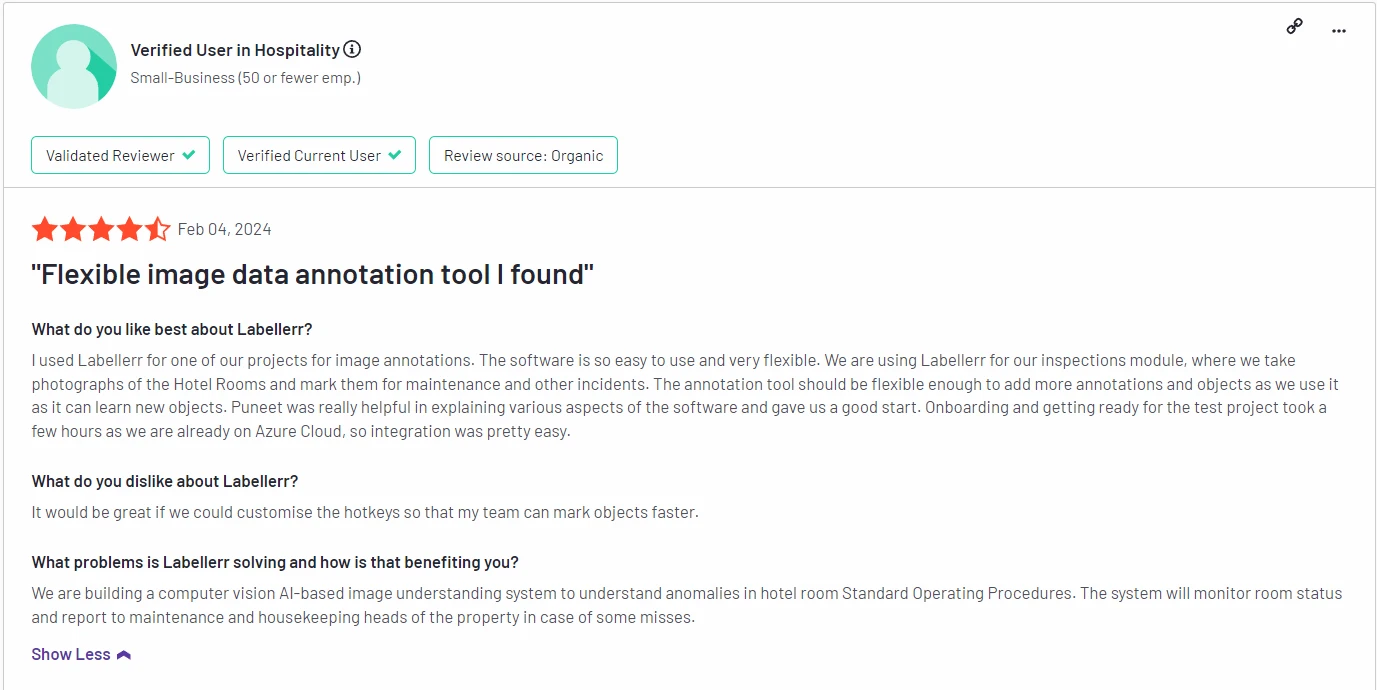
G2 review 4.8 out of 5. Check the detailed review here.
2. Amazon SageMaker Ground Truth
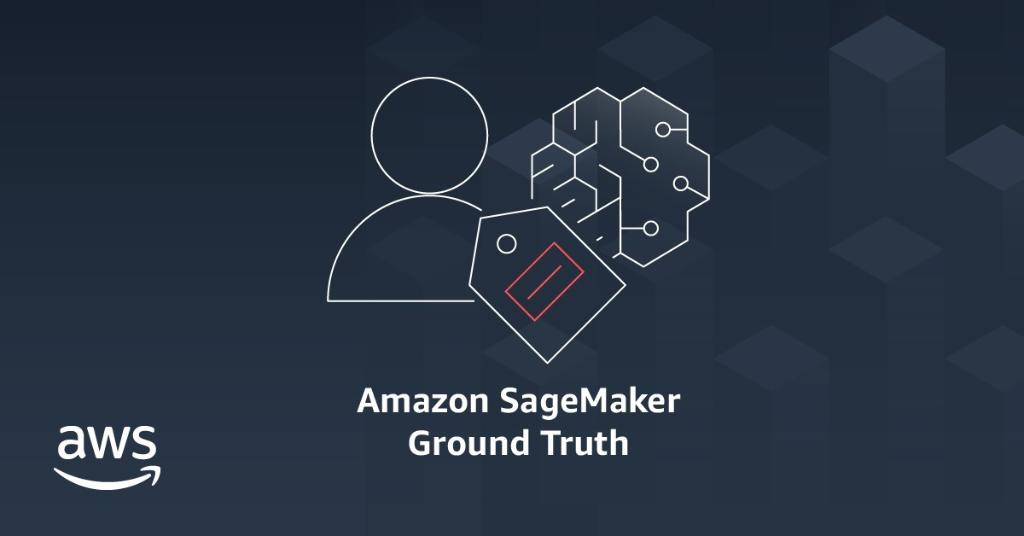
Amazon SageMaker Ground Truth is an AI-powered platform that enables users to create high-quality training data for machine learning models.
It offers a range of annotation tools, including image classification, object detection, and semantic segmentation.
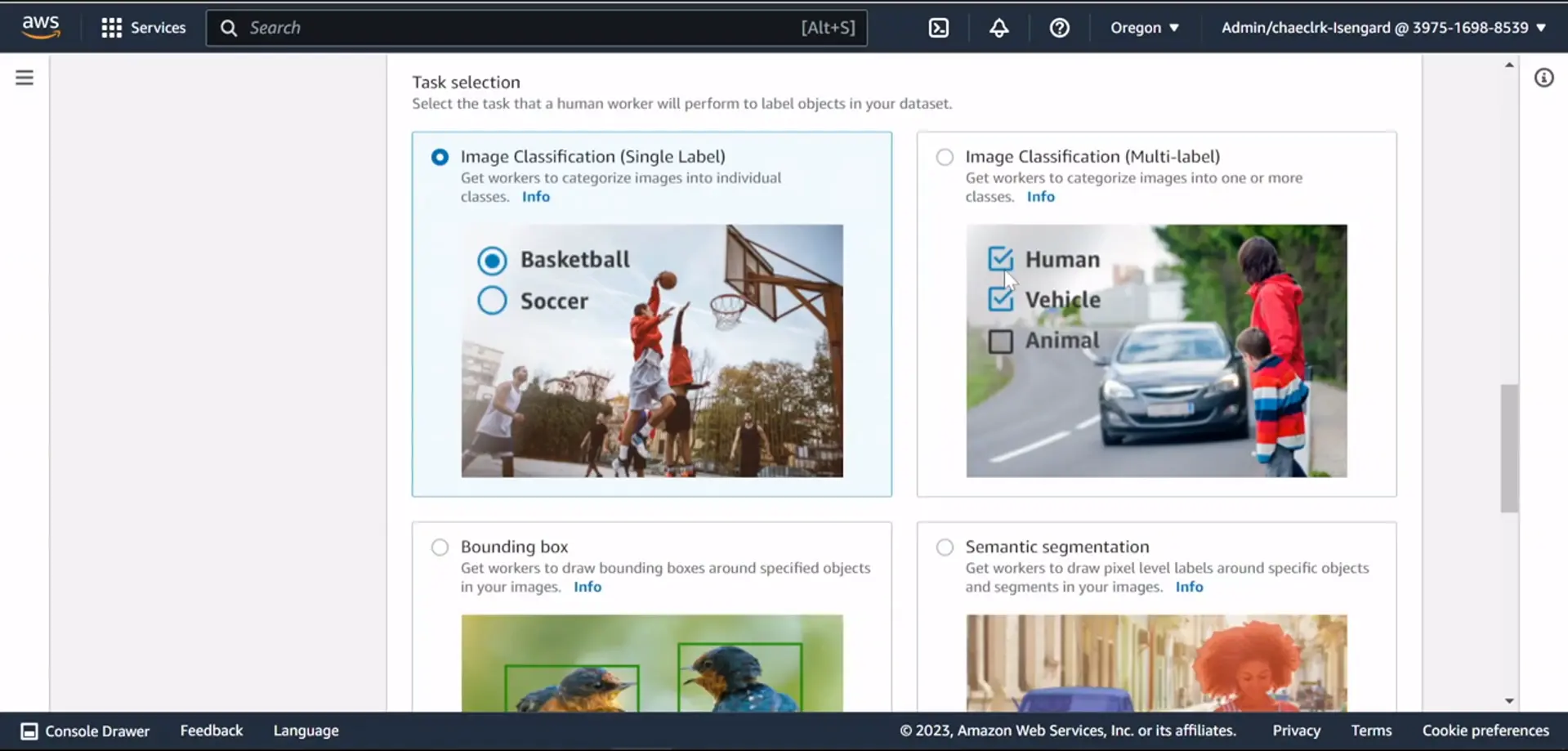
Top features
- FM Customization
- Model evaluation
- Data labeling
- Workforce options
- Task automation tools
Pros
- Easy to use
- Customer Support
- API management is Easy
- Intuitive UX
Cons
- Expensive
- Learning Curve
Pricing: Pay-as-you-go pricing based on data labeling tasks; costs can vary depending on the volume and type of annotations.
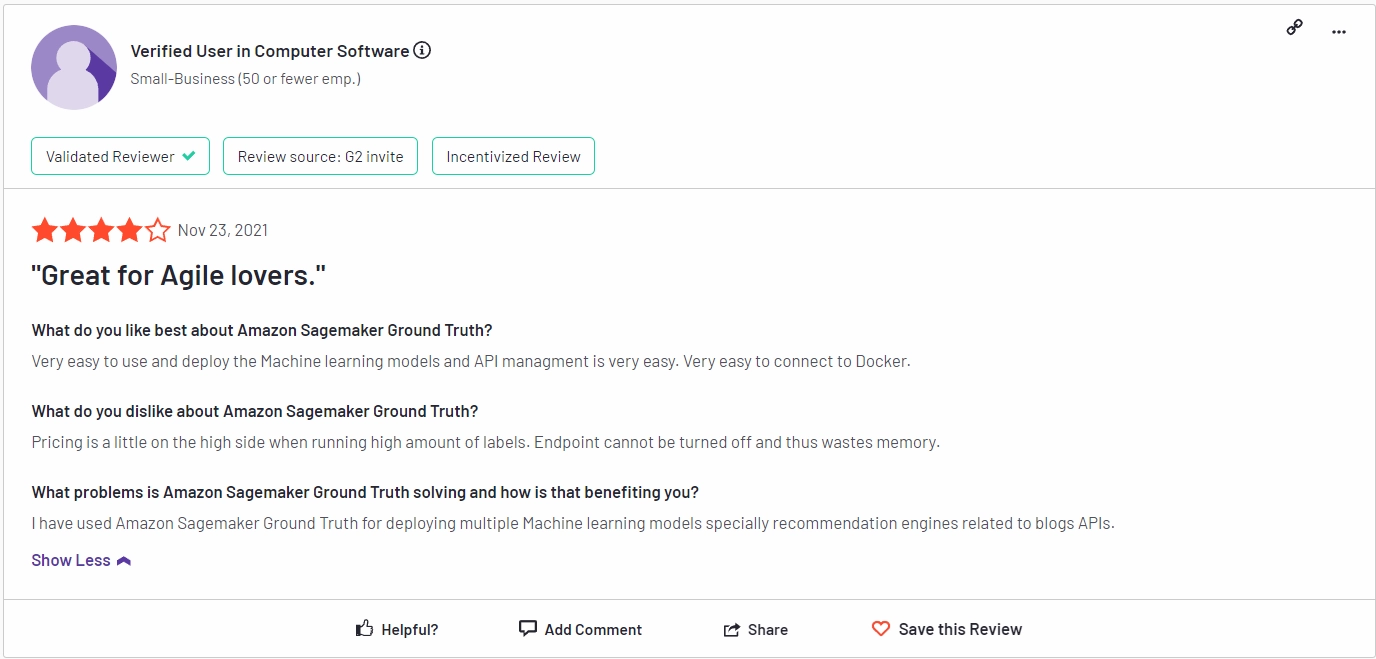
G2 review 4.0 out of 5. Check the detailed review here.
3. CVAT
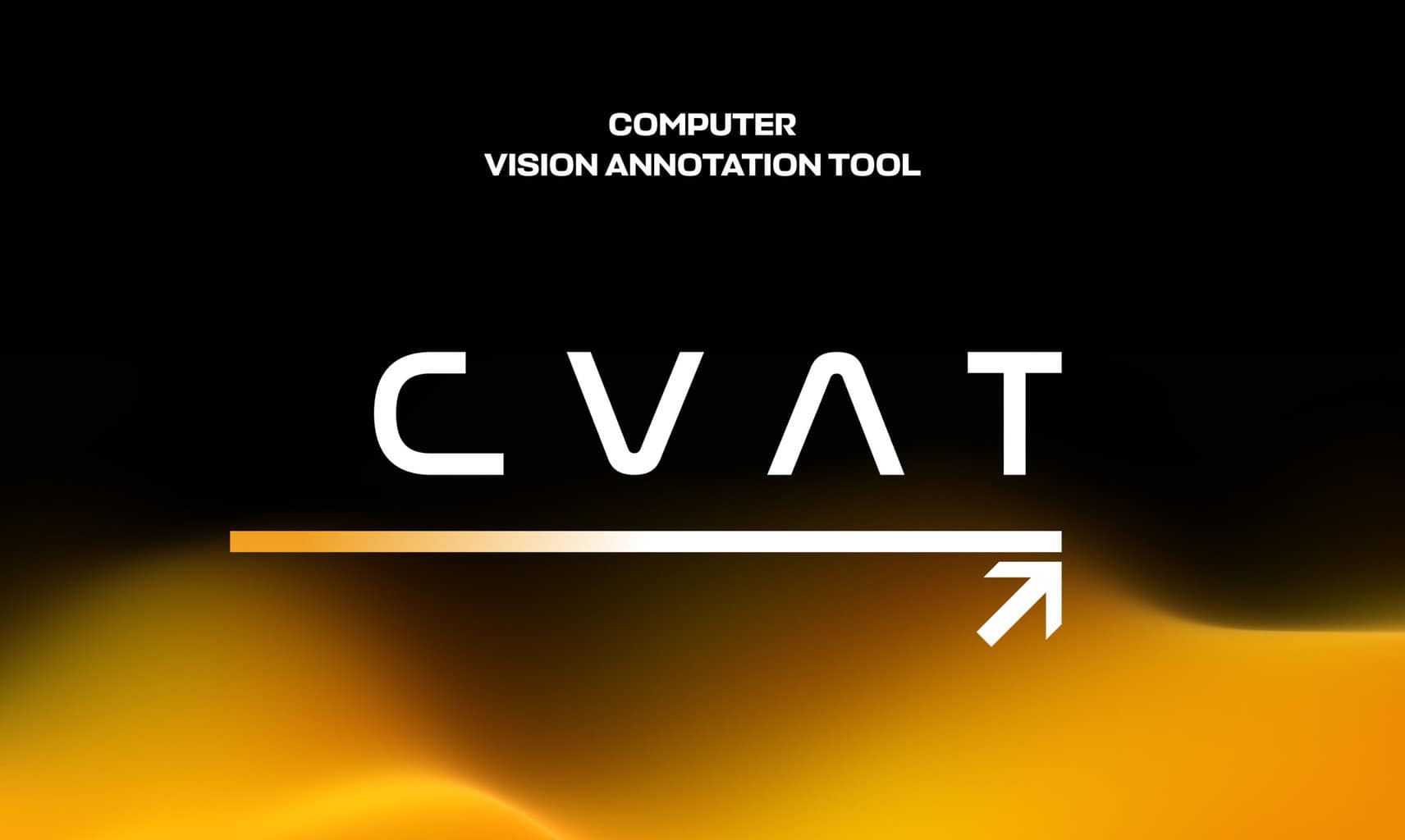
Computer Vision Annotation Tool (CVAT) is an open-source image annotation tool that offers a range of annotation types, including bounding boxes, polygons, and segmentation. It also supports collaborative annotation and quality control.
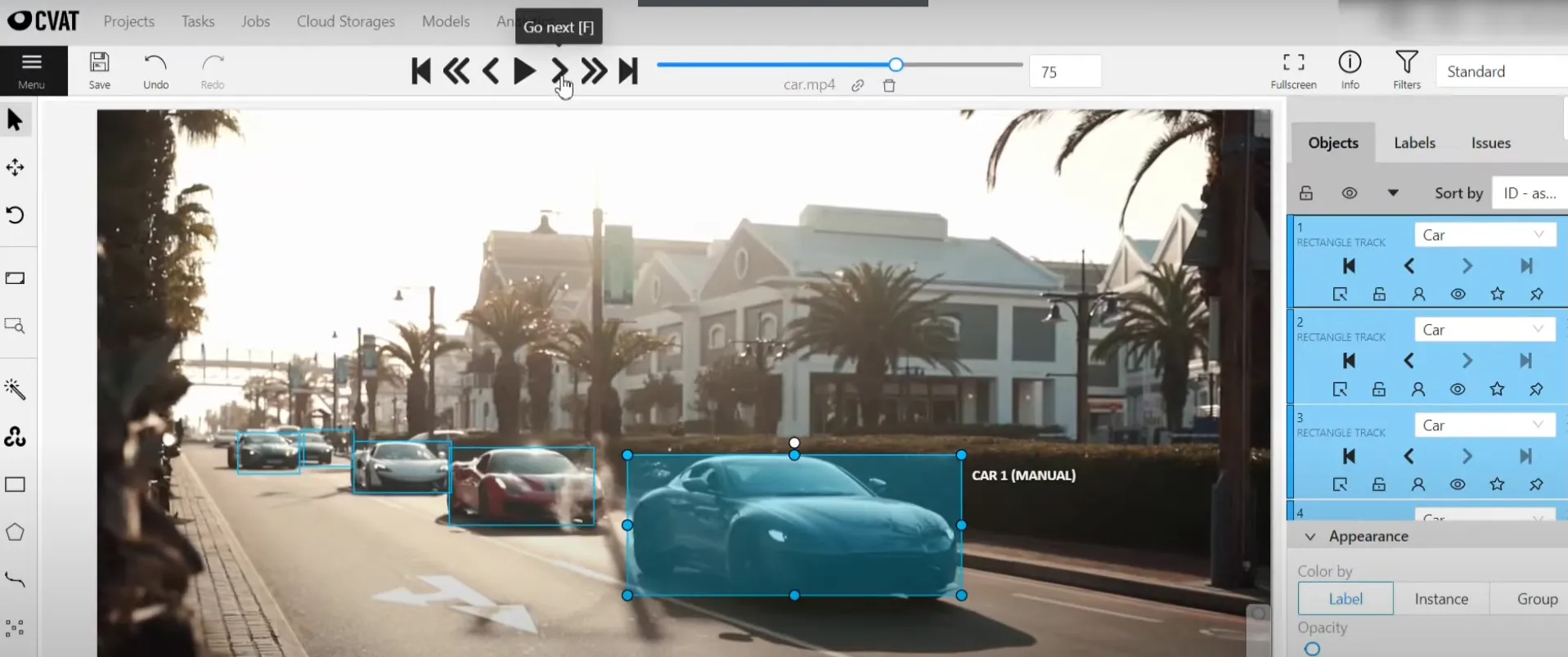
Top Features
- Image Classification.
- Object Detection.
- Semantic and Instance Segmentation.
- Point Clouds / LIDAR.
Pros
- Cloud-Based Services
- Customer Support
- Customization
Cons
- Performance Issues
- Annotation Issues
- Complexity
- Integration Issues
- Poor Usability
Pricing: Cloud plans for $33 per month.
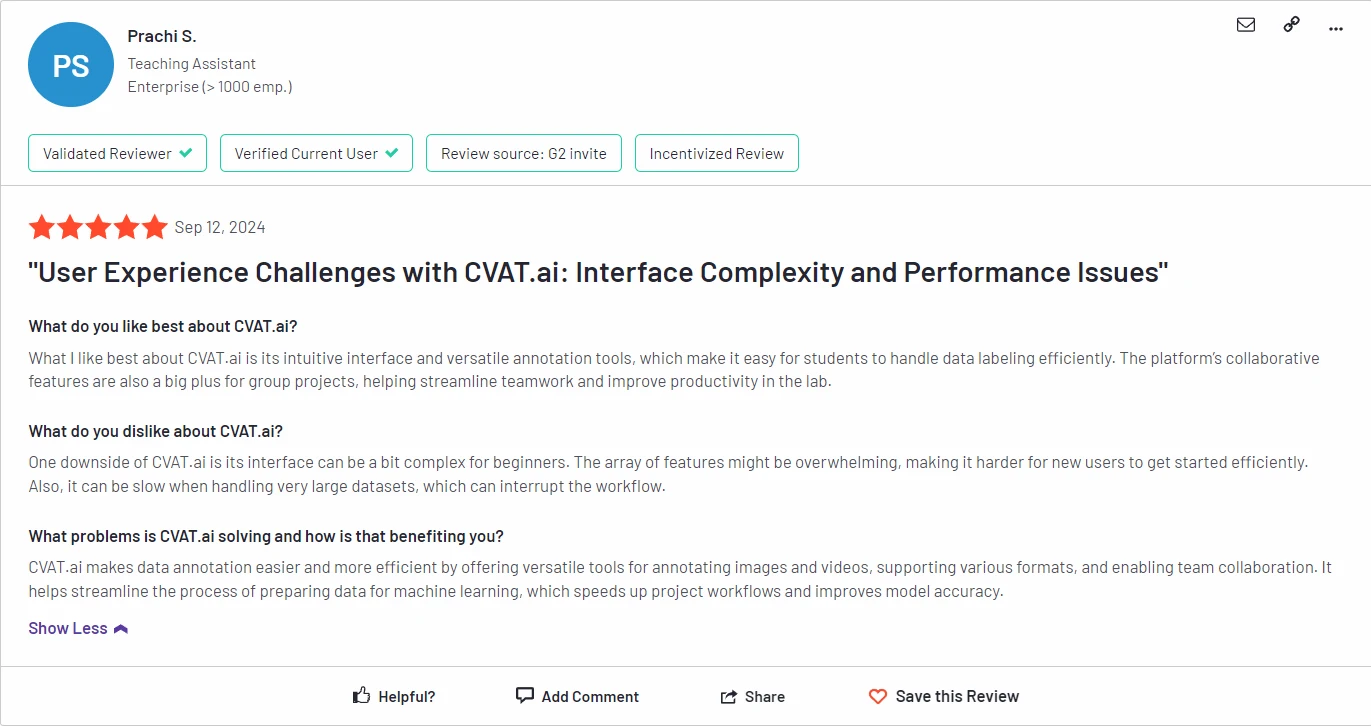
G2 review 4.5 out of 5. Check the detailed review here.
4. Labelbox
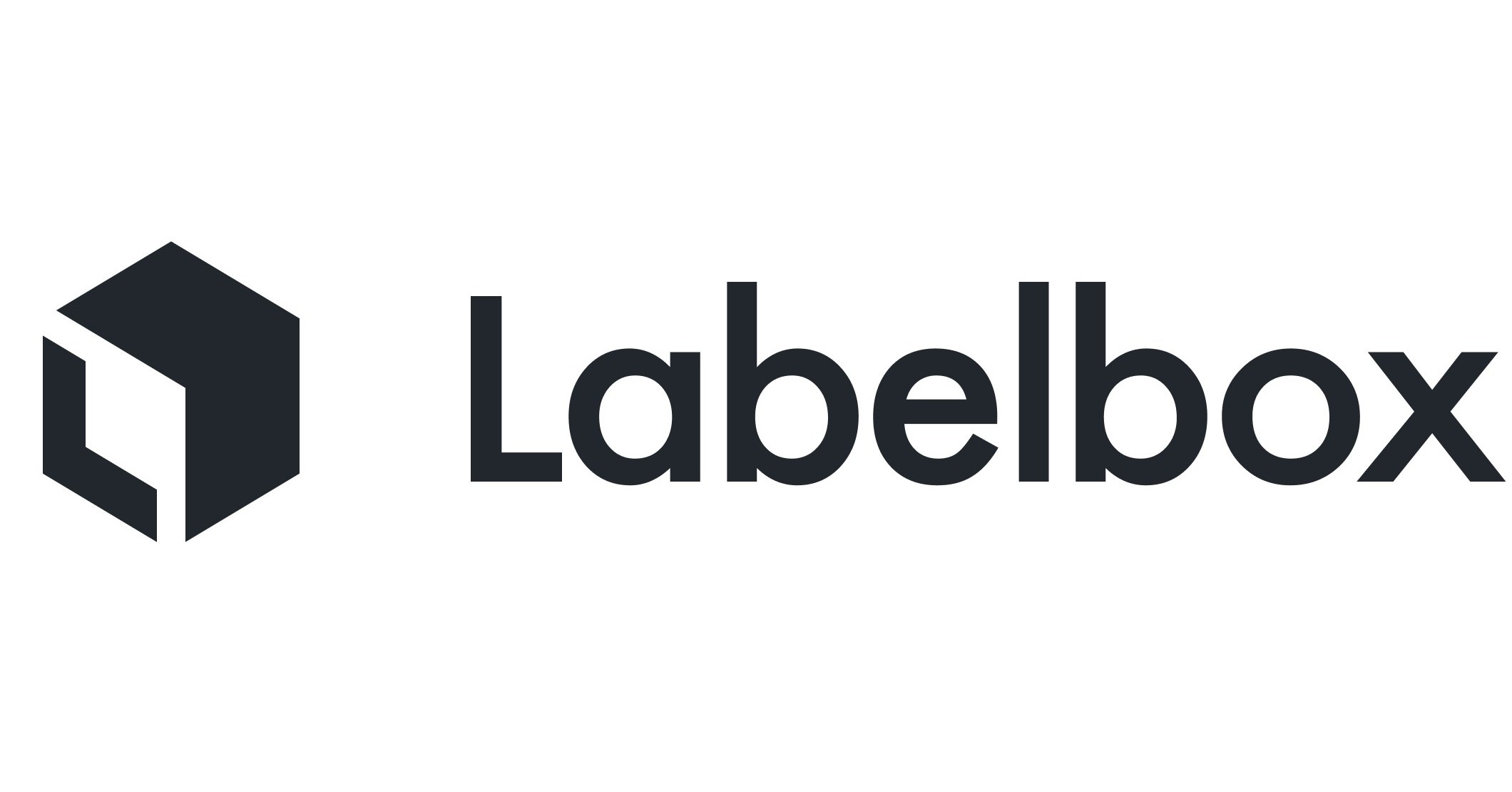
Labelbox is an image annotation platform that offers a range of annotation tools, including bounding boxes, polygons, and semantic segmentation. It also has built-in quality control features to ensure accurate annotations.
Labelbox also provides features for collaboration and quality control, such as team management, annotation review, and consensus labeling.
With Labelbox, teams can accelerate the development of their AI models and improve their accuracy and performance.
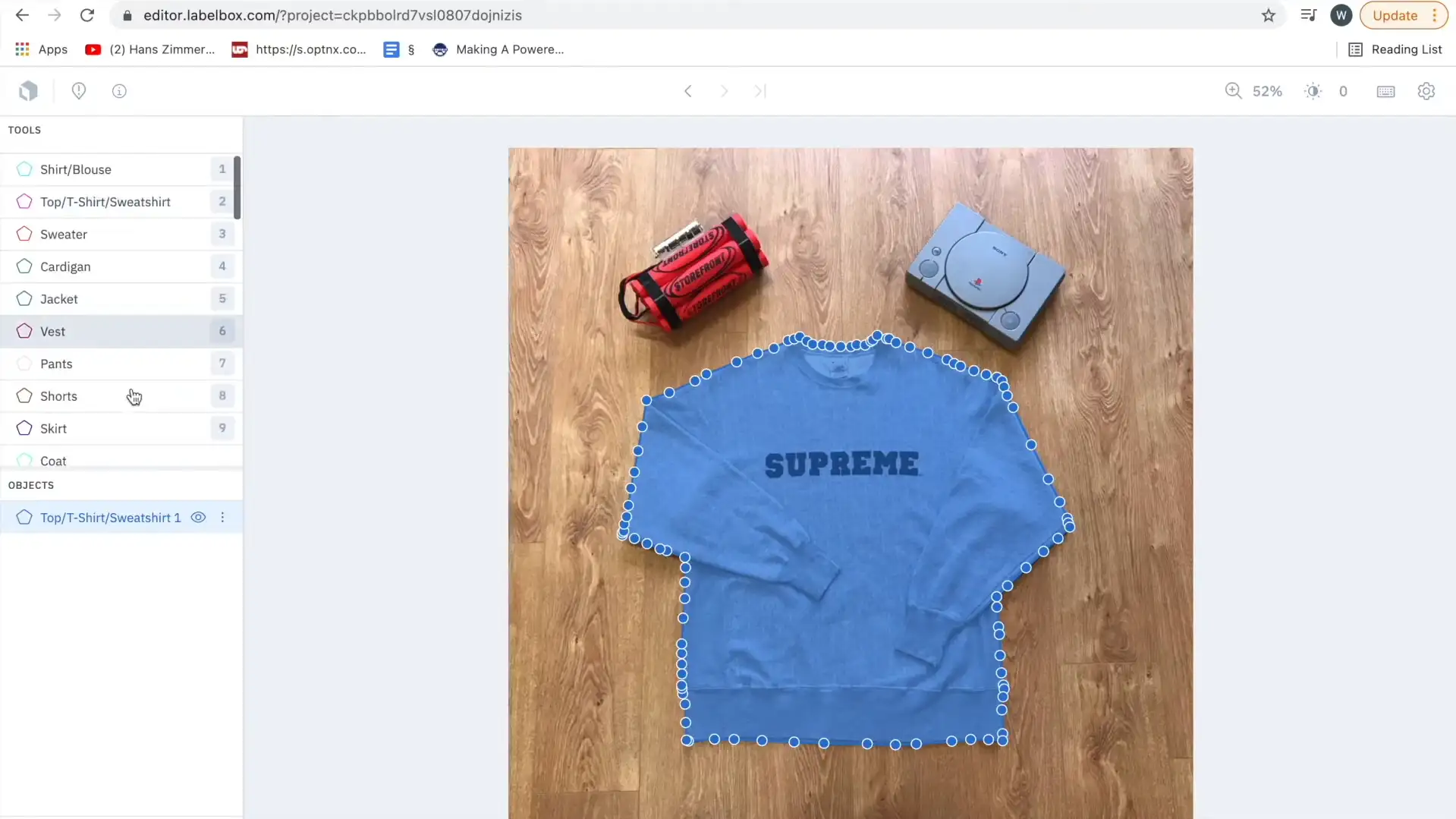
Top Features
- Quality
- Automation
- Image Annotation
- Natural Language Annotation
- Speech Annotation
Pros
- Ease of Use
- Data Management and Handling
- Easy Integrations
Cons
- Buggy Performance
- Functionality Limitations
- Lack of Guidance
- Lack of Tools
Pricing: Starts at $166.6 per month for teams custom plans available based on requirements.
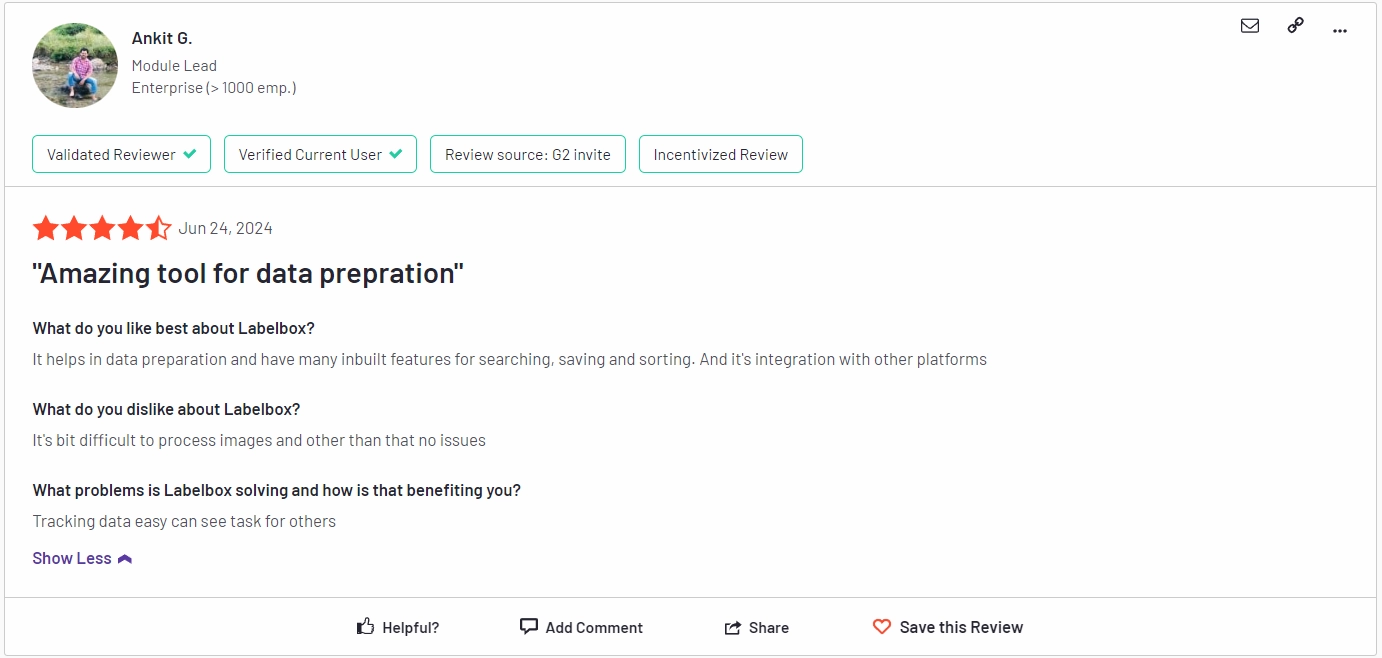
G2 review 4.7 out of 5. Check the detailed review here.
5. V7 Labs

V7 Labs is a software development company that focuses on creating cutting-edge solutions using artificial intelligence and machine learning.
They specialize in developing computer vision and natural language processing technologies to solve complex problems in various industries, including healthcare, finance, and e-commerce.
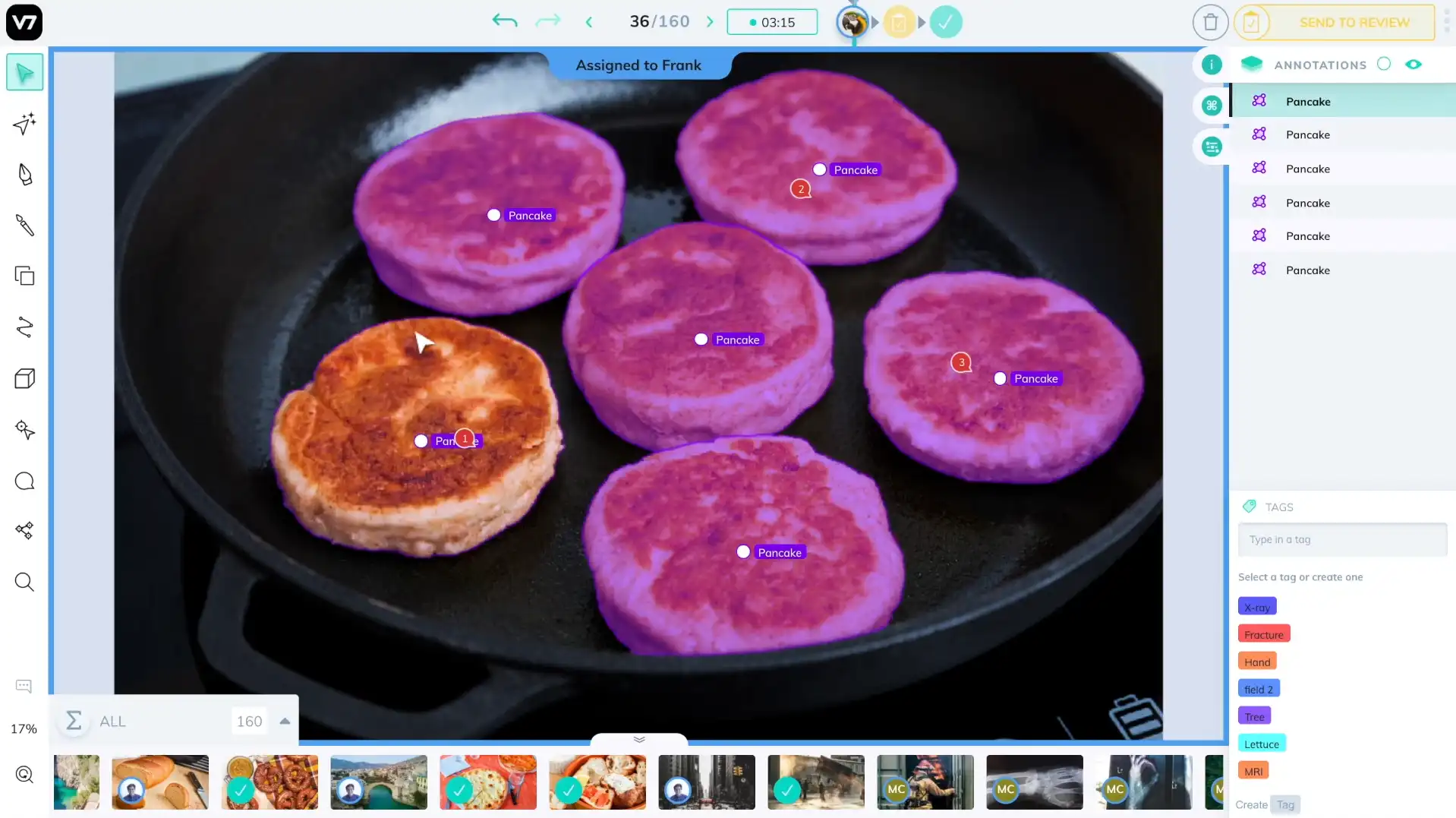
Top Features
- Automatic data labeling, with segmentation tasks and sementic masks
- Intuitive dataset, workflow, and model management for better control over your ML development pipeline.
- Annotation services through official partners with expertise in niche industries.
Pros
- Ease of Use
- Annotation Tools
- Annotation Efficiency
- Data Labeling
Cons
- Missing Features
- Lagging Issues
Pricing: Plans start at $249 per month, with custom pricing for individuals. Check the latest pricing details
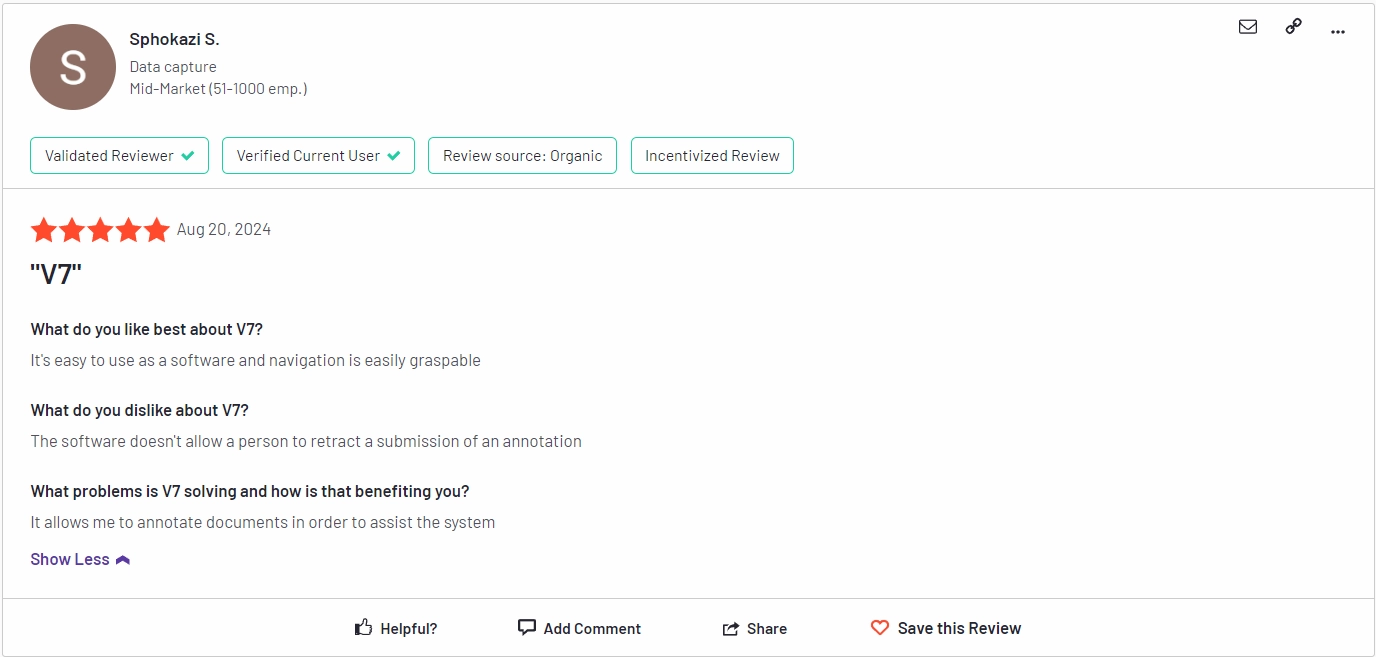
G2 review 4.8 out of 5. Check the detailed review here.
6. VGG Image Annotator (VIA)
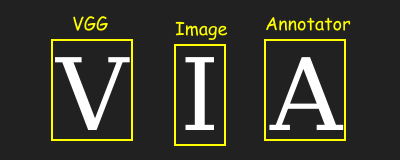
VGG Image Annotator (VIA) is an open-source image annotation tool developed by the Visual Geometry Group (VGG) at the University of Oxford.
It provides an easy-to-use interface for annotating images with various types of annotations such as points, lines, polygons, rectangles, and more.
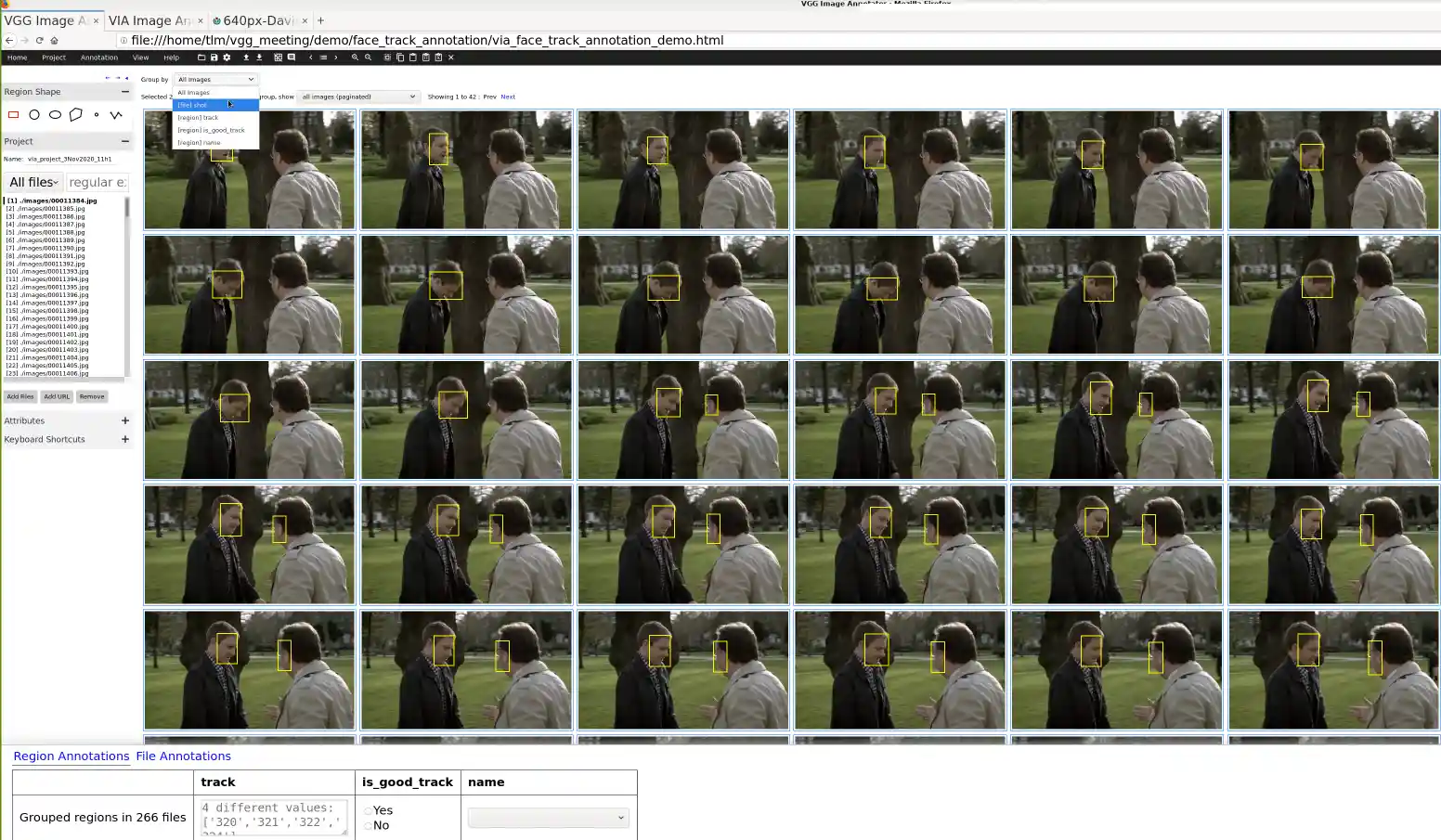
VIA also supports the annotation of attributes, which allows users to add additional information to annotations.
VIA can be used for various applications such as object detection, image segmentation, and image classification.
It supports importing and exporting annotations in various formats such as CSV, JSON, and PASCAL VOC. VIA can be run on a local machine or on a web server, and it can also be customized to support specific annotation tasks.
Pricing: Free and open-source.
7. Dataturks
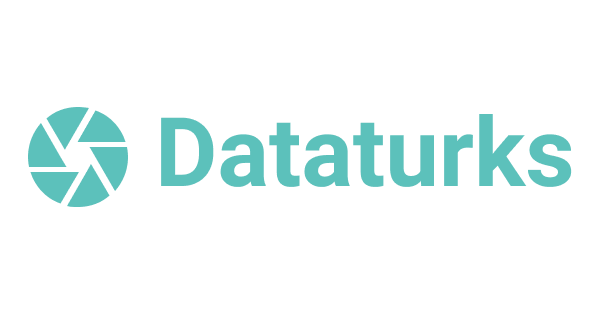
Dataturks is a cloud-based platform for image annotation and data labeling. It offers a range of annotation types, including bounding boxes, polygons, and semantic segmentation. It also has built-in quality control features to ensure accurate annotations.
Dataturks also provides integrations with popular machine learning frameworks such as TensorFlow, PyTorch, and Keras.
Overall, Dataturks aims to make data annotation faster, easier, and more accurate, allowing ML teams to focus on building better models.
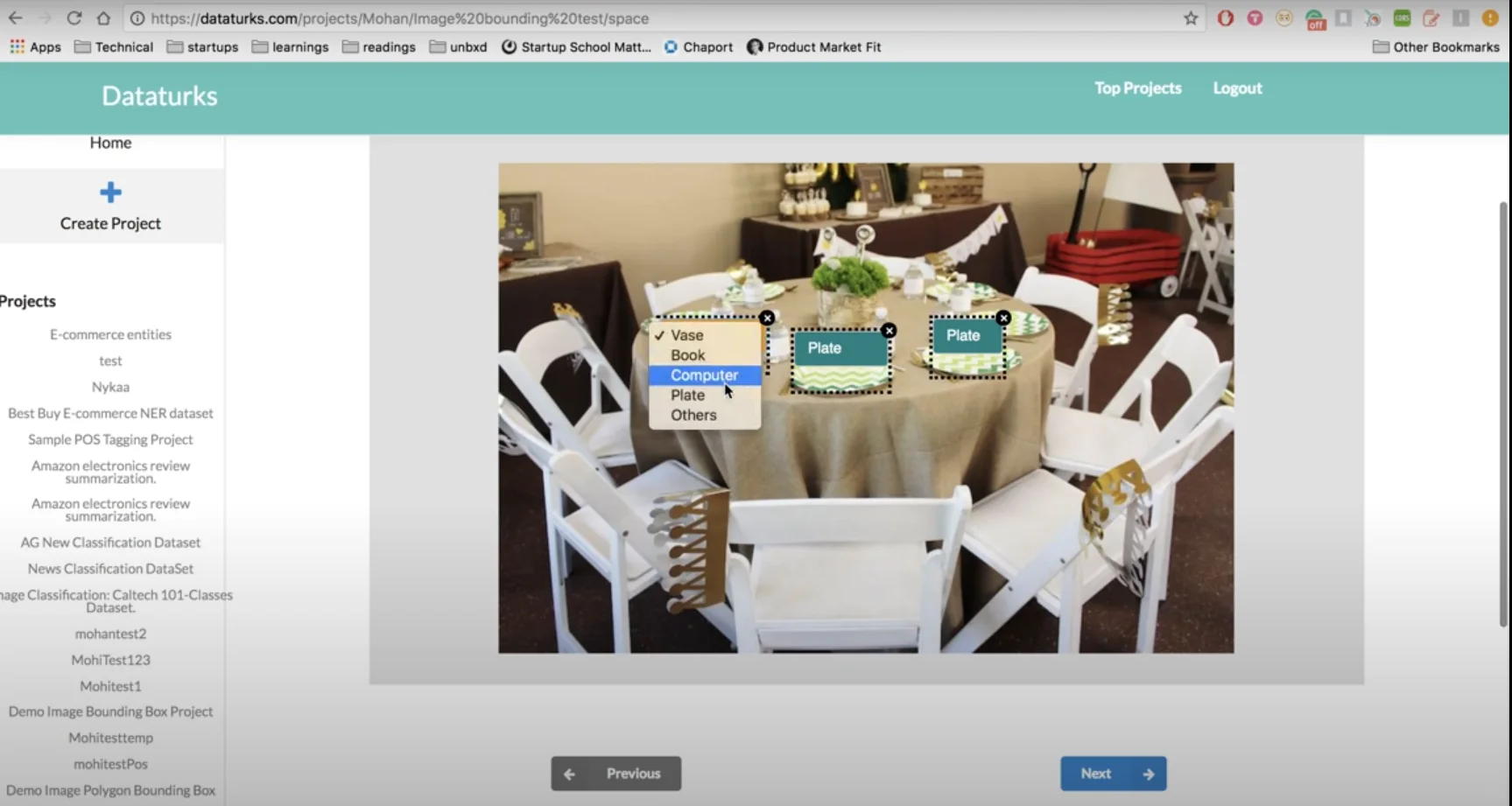
Top features
- Image Annotation
- Text Annotation
- Video Annotation
- Audio Annotation
Pros
- Easy to set up
- Keyboard Shortcuts
- API integration
Cons
- No polygon labeling tool
Pricing: Free tier available; paid plans start at $50 per month for additional features.
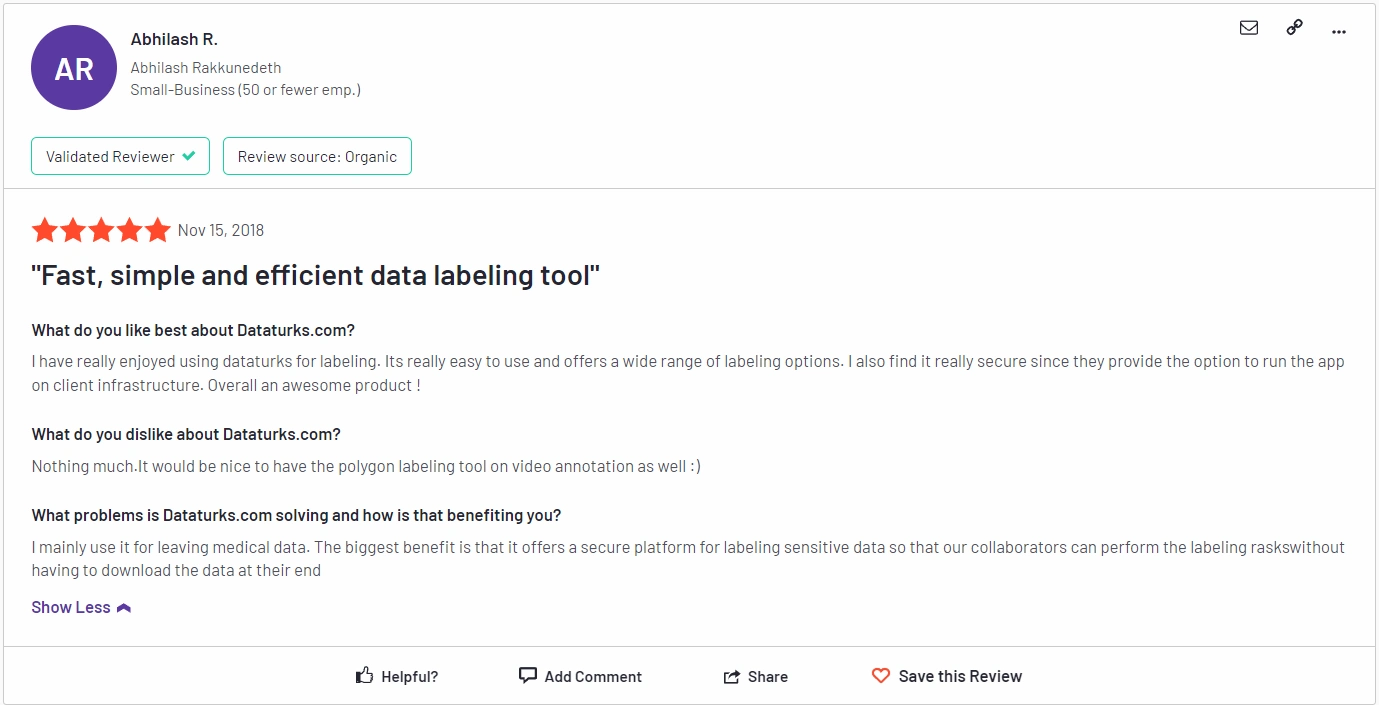
G2 review 5 out of 5. Check the detailed review here.
8. Hasty.ai
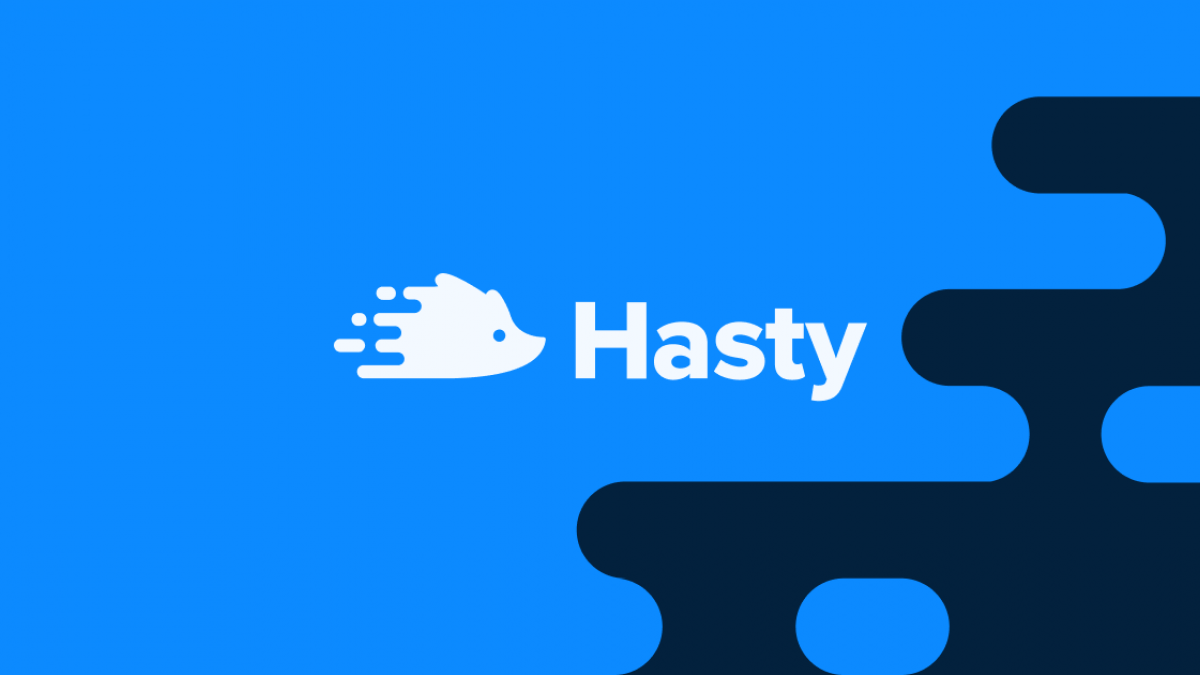
Image Source
Hasty.ai is a platform for data labeling and annotation that uses AI to assist in the annotation process. It offers a range of annotation types, including bounding boxes, polygons, and semantic segmentation.
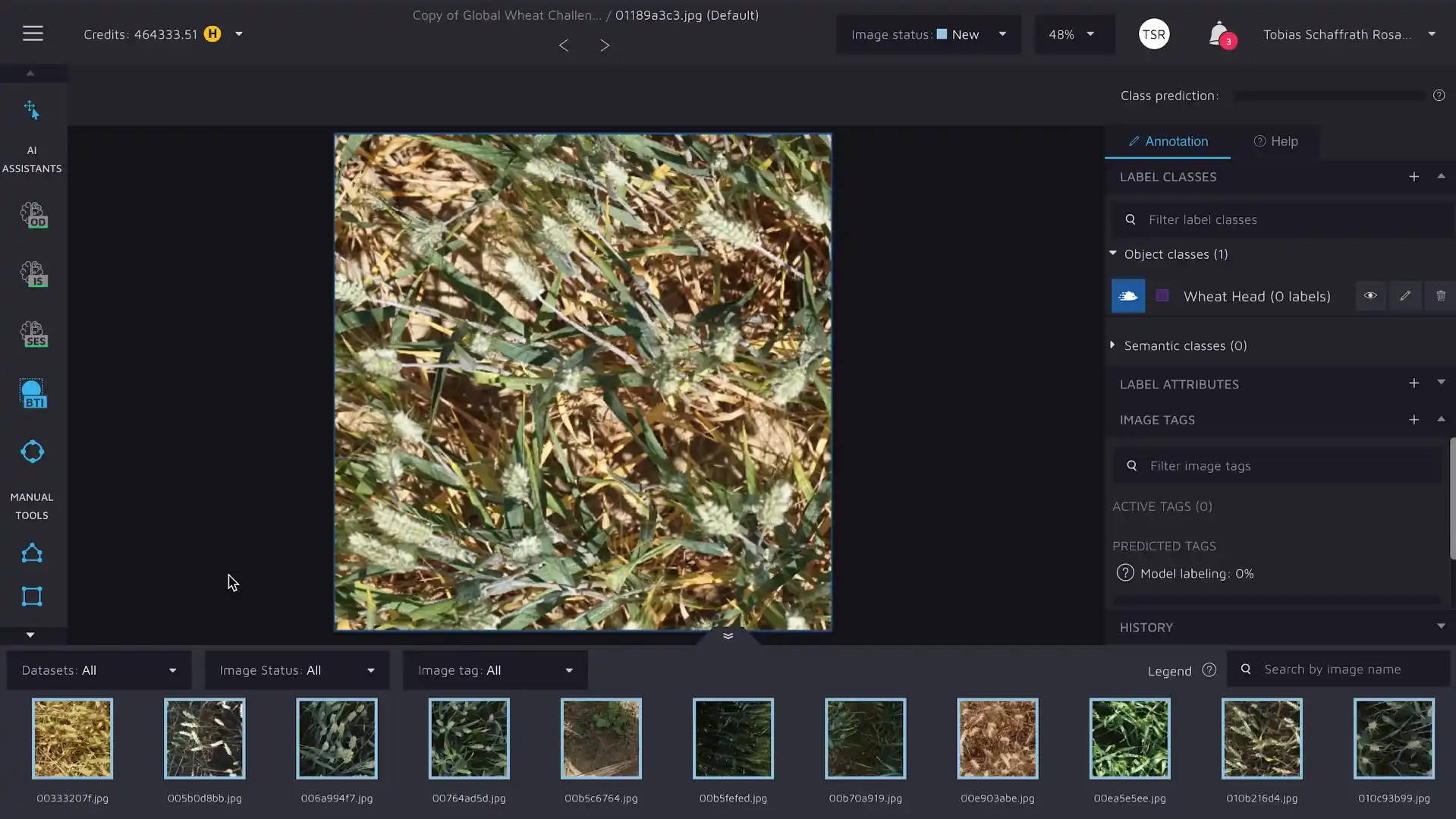
Pros
- Annotation Efficiency
- Data Access
- Time-saving
Cons
- Expensive
Pricing: Starts at $297 per month for essential 30k; custom pricing for teams.
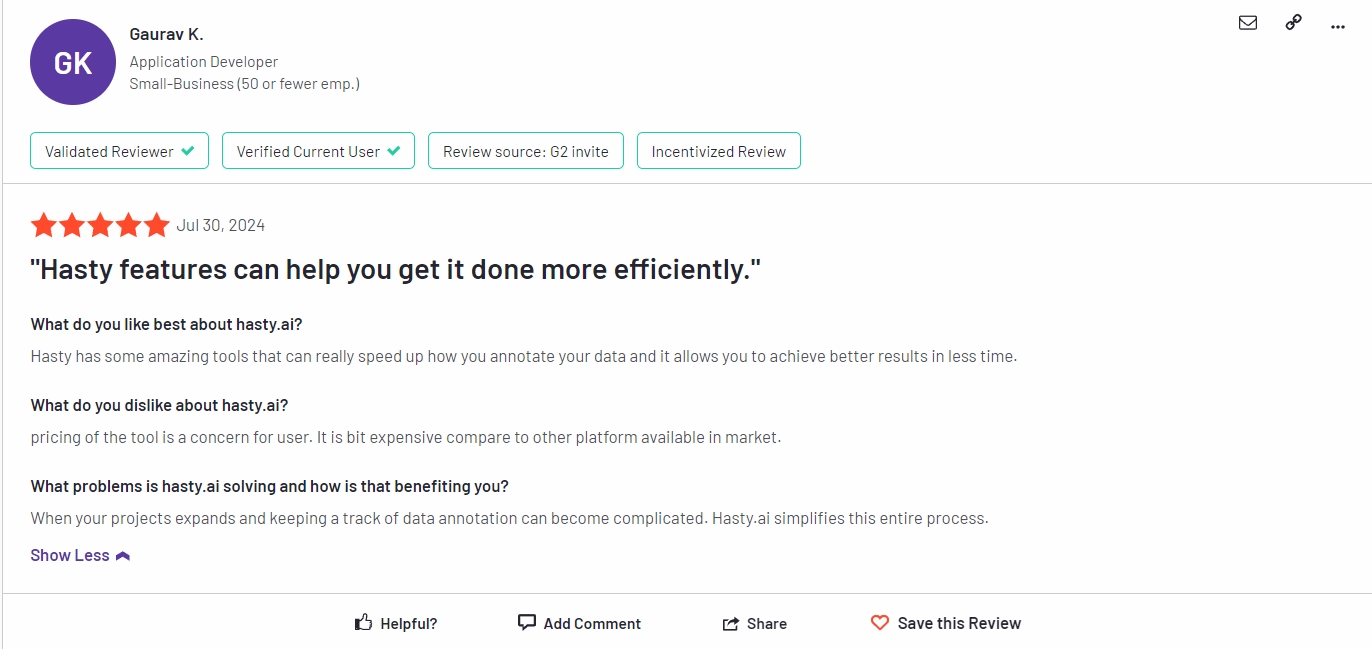
G2 review 4.4 out of 5. Check the detailed review here.
9. Roboflow
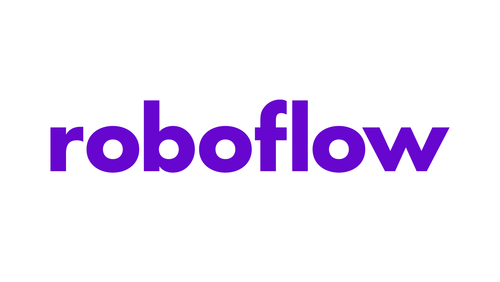
Roboflow is a cloud-based platform for data labeling and annotation. It offers a range of annotation types, including bounding boxes, polygons, and semantic segmentation. It also has built-in quality control features to ensure accurate annotations.
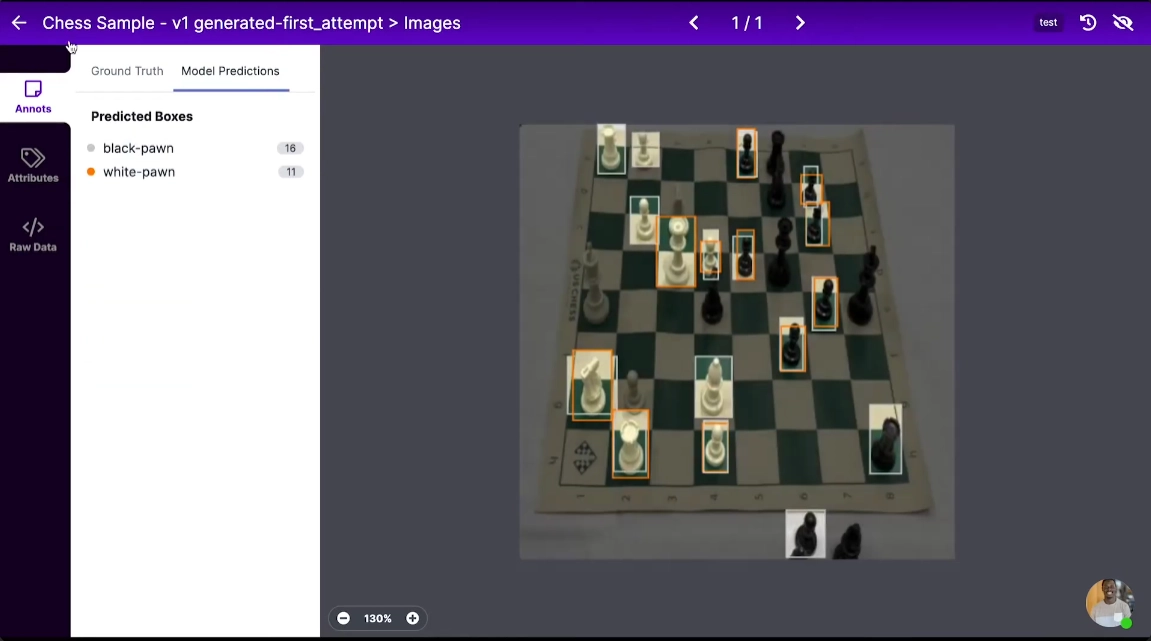
Pros
- Customer Support
- Ease of Use
- Accessibility
- Efficiency
Cons
- Data Limitations
- Inefficient Labeling
- Lack of Resources
Pricing: Free tier available; paid plans start at $249 per month. For details check here.
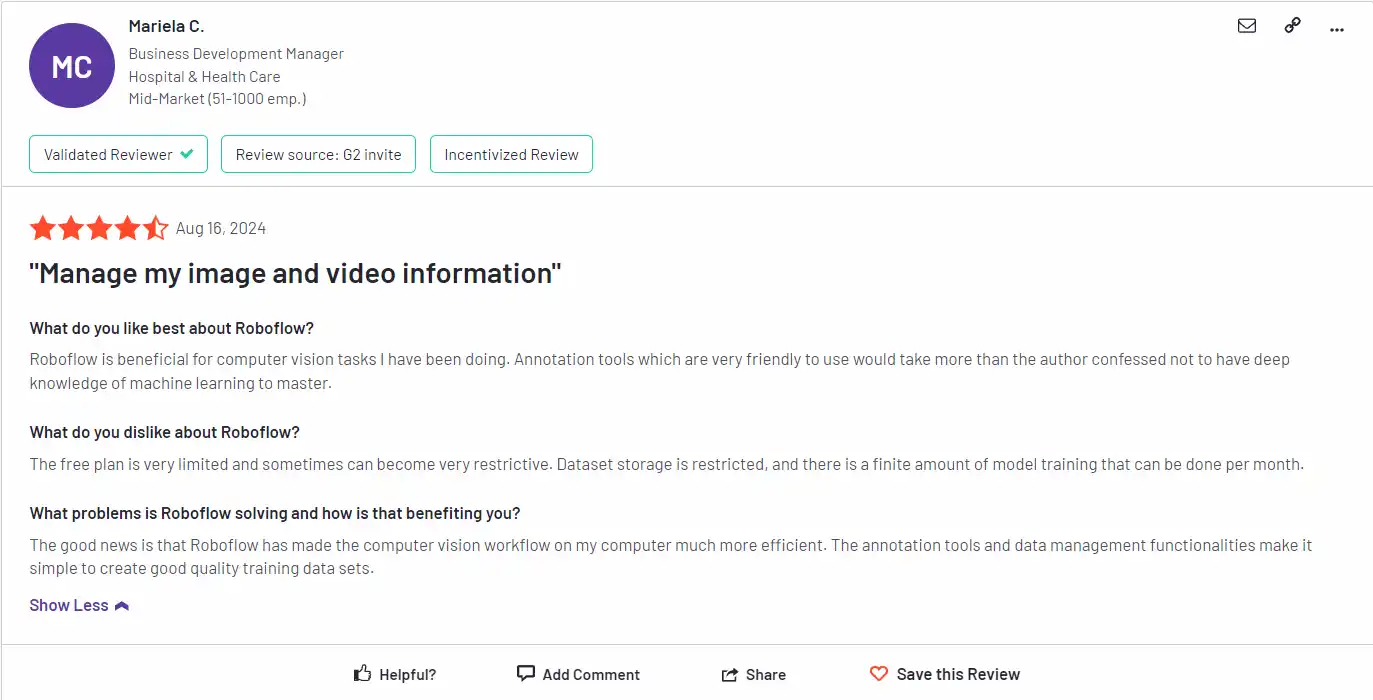
G2 review 4.7 out of 5. Check the detailed review here.
10. SuperAnnotate
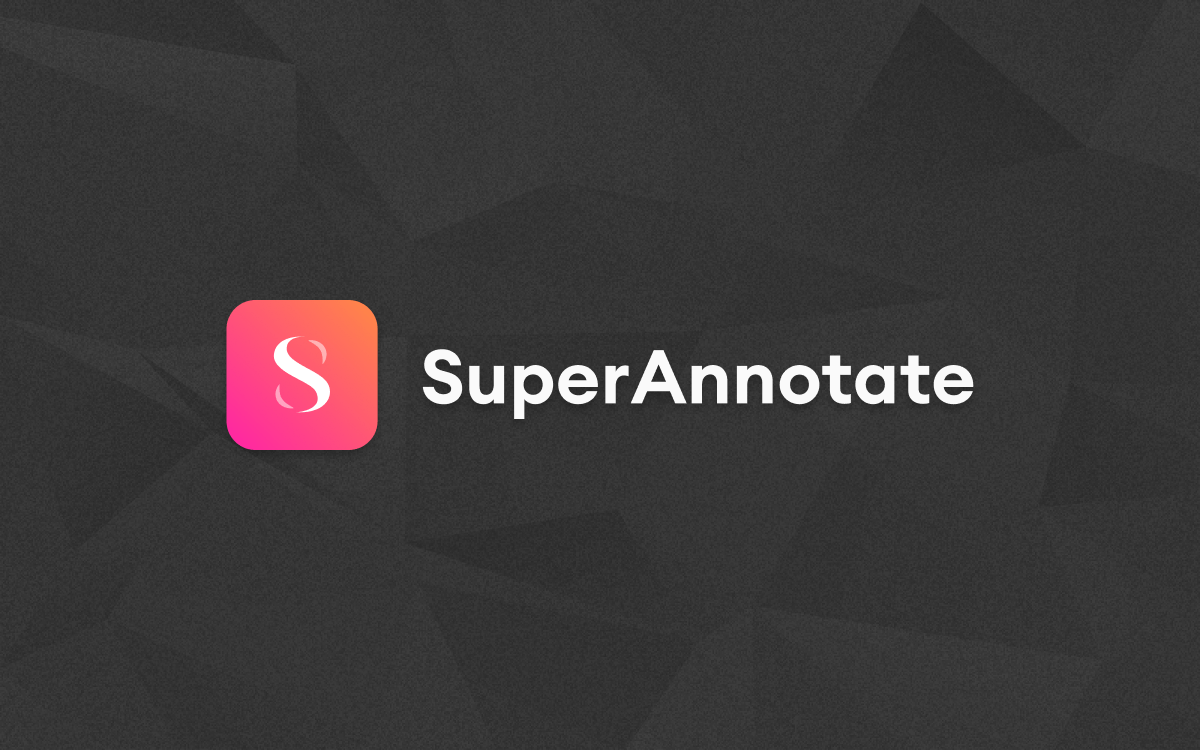
SuperAnnotate is a web-based image annotation tool that offers a range of annotation types, including bounding boxes, polygons, and segmentation. It also supports collaborative annotation and quality control.
Top features
- Quality
- Automation
- Image Annotation
- Natural Language Annotation
- Speech Annotation
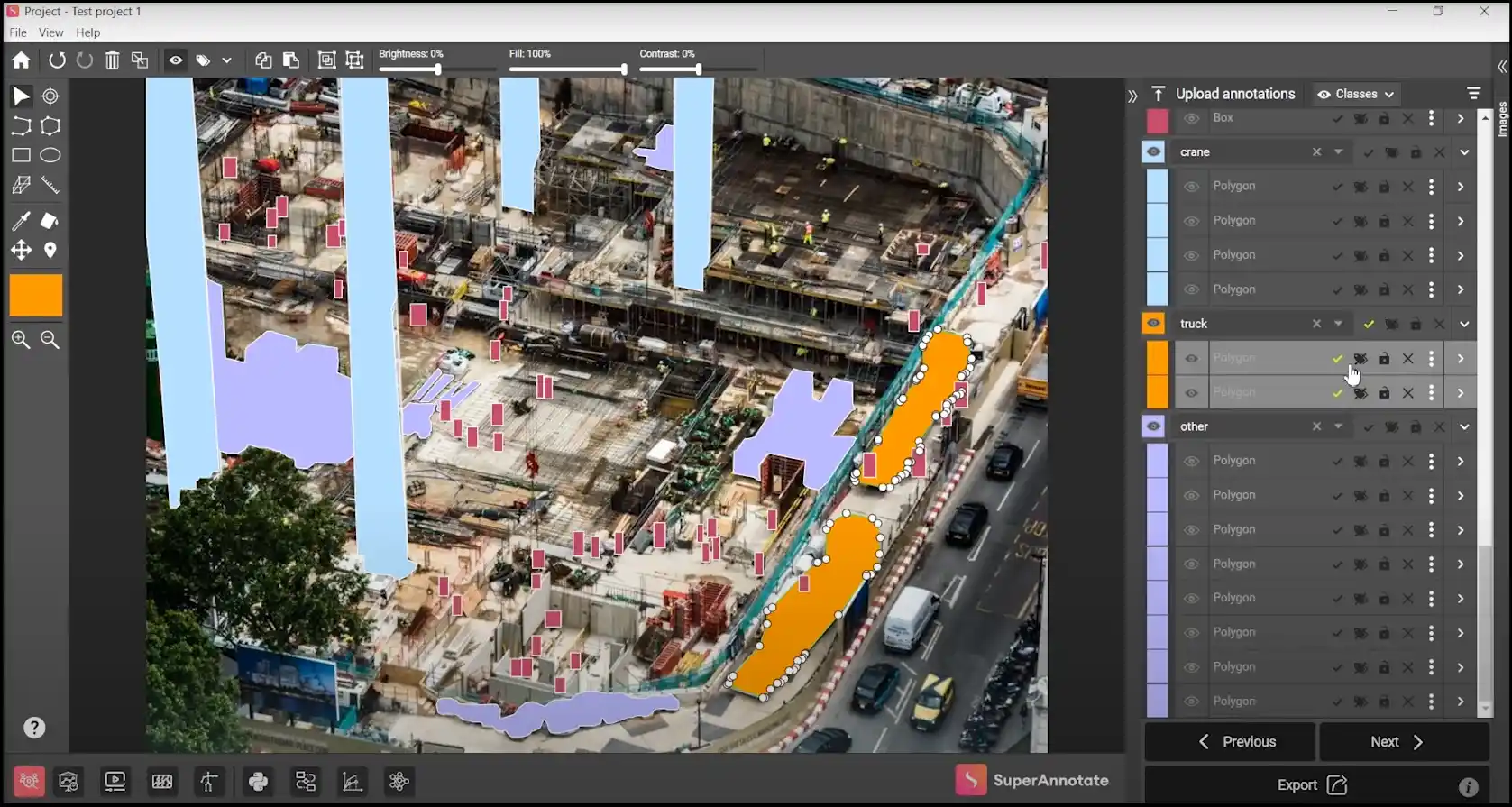
Pros
- Ease of Use
- Annotation Efficiency
- Customer Support
- Data Labeling
Cons
- Annotation Issues
- Missing Features
- Lack of Resources
- Limited Customization
- Expensive
Pricing: Starts at $30 per month for individual users; custom pricing for teams.
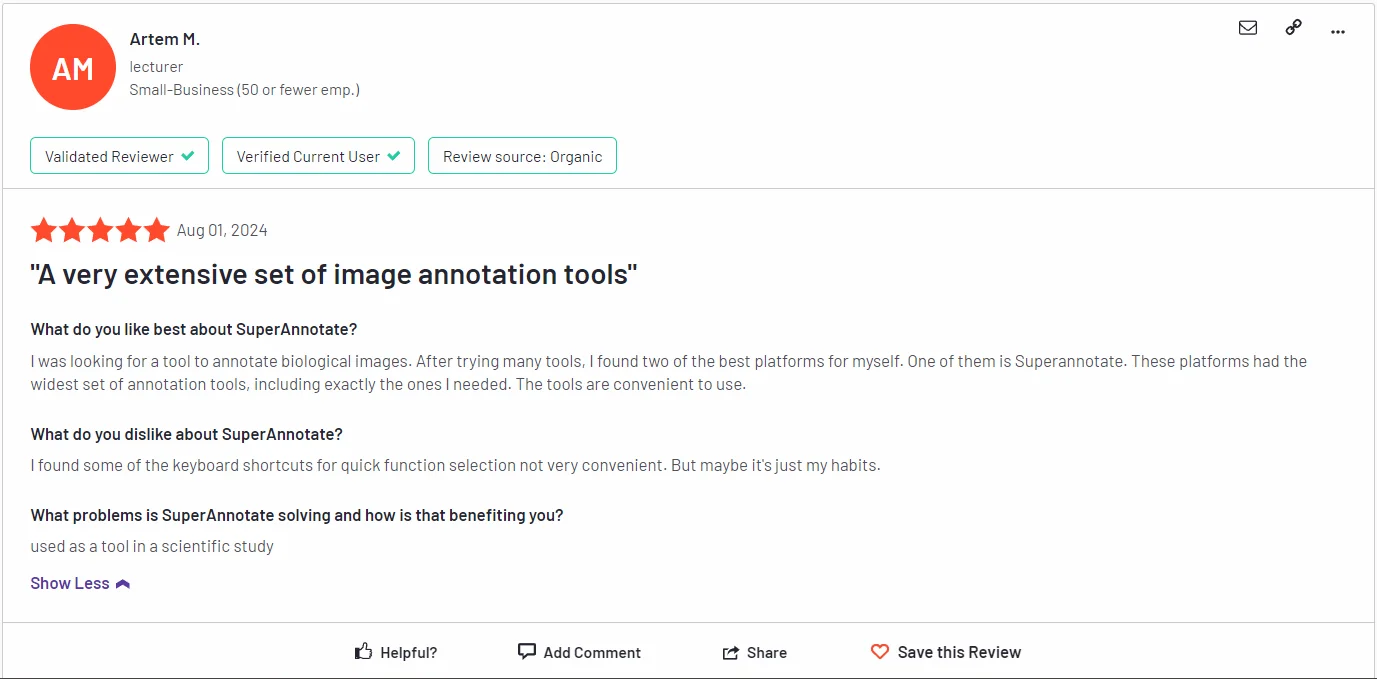
G2 review 4.9 out of 5. Check the detailed review here.
How do Image Annotation Tools Improve Efficiency?
Using image annotation tools will increase efficiency in a number of ways, including:
- Save Time and Resources
Saving resources and time Tools that automatically annotate photos can process many images fast, saving time and resources.
- Reducing Human Errors
Accurate image annotation software can help minimize human error.
- Lowers the Cost of Human Labor
The cost of human labor can be reduced by using image annotation techniques, which can also boost productivity and accuracy.
- Helps in Decision Making for Businesses
By providing precise and trustworthy data, image annotation techniques may provide decision support for businesses.
Overall, tools for image annotation are crucial for teaching machine learning models to comprehend and interpret visual input in general.
They can decrease human error, save time and money, and provide trustworthy data to support decision-making for organizations.
Read our other listicles:
1. Top 10 Best Video Annotation & Labeling Tools
2. Top 10 Auto Annotation & Labeling Tools in 2024
Conclusion
So these are some of the most powerful image annotation tools you can try in 2024 and beyond.
Each tool has its own strengths, ranging from active learning to quality control features, making them suitable for various businesses of all sizes.
Want to invest in an image annotation and labeling tool for your business?
Consider the type of annotation tasks you need to complete, the level of accuracy required, and the scalability of the platform.
Compare the above tools and choose one that meets your specific needs and requirements.
With the right tool, you can take your image labeling game to the next level and gain a competitive edge in your industry.
Frequently Asked Questions
1. What are image annotation tools?
Image annotation tools are software or platforms that make it easier to label or identify certain areas, objects, or properties inside an image collection.
2. Why are image annotation tools important in the data labeling process?
Image annotation tools are essential for data labeling because they make it possible to efficiently and accurately annotate images.
3. How do image annotation tools help in collaboration?
By enabling numerous users to work on the same annotation project at once, image annotation tools facilitate cooperation.
These technologies frequently offer functions like user administration, job delegation, and annotation version control.
4. Can image annotation tools handle large-scale annotation projects?
Yes, a lot of image annotation tools are capable of handling complicated annotation tasks.

Simplify Your Data Annotation Workflow With Proven Strategies
.png)


